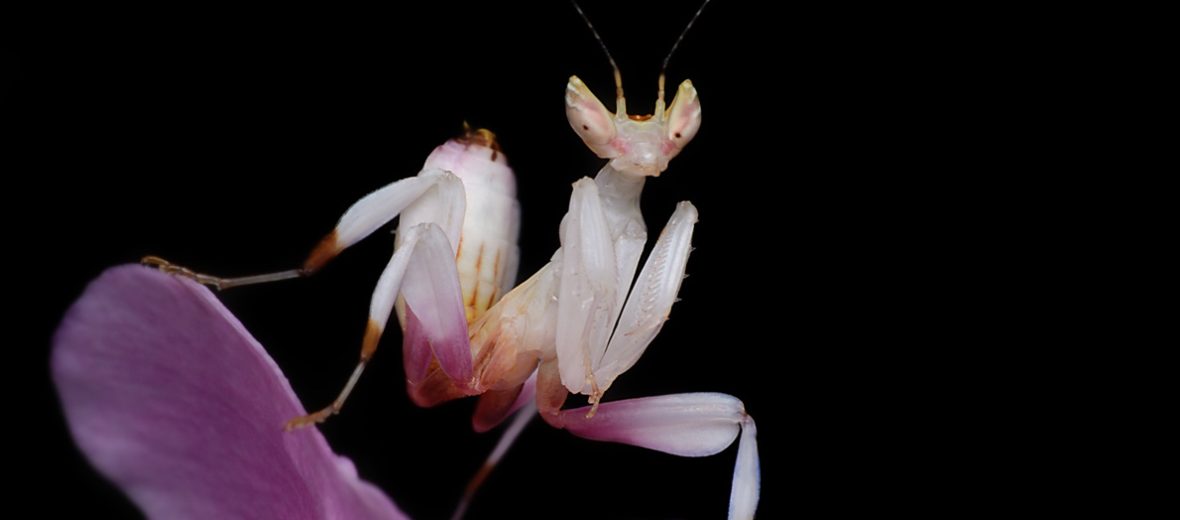
The orchid mantis, aka walking flower mantis, can be found in the rainforests of Southeast Asia, particularly Indonesia, Malaysia, Myanmar, the Philippines, and Thailand. These insects are as deadly (if you’re an animal they prey on) as they are beautiful. Orchid mantises are not currently evaluated by the IUCN. It is presumed that they would be listed as Least Concern, as they are abundant and also breed readily in captivity.
First the Stats…
Scientific name: Hymenopus coronatus
Length: Up to 2.5 inches
Lifespan: Up to 8 months
Now on to the Facts!
1.) Some orchid mantises possess dark sections on their abdomens that resemble the ovule of a budding flower.
2.) In what is termed as aggressive mimicry, these mantids perfectly resemble the flowers they live on and around.
3.) Like all mantises, they display sexual dimorphism, in that the males are significantly smaller than females.
4.) Orchid mantises are able to change their coloration to match that of their surroundings.
5.) These mantids, like others, can fly.
But wait, there’s more on the orchid mantis!
6.) Snakes, lizards, frogs, birds, and larger insects all prey on these beauties.
7.) With 2 sets of wings, these predators will simply fly away, if threatened and if their camouflage fails them.
Did you know…?
All mantis species are ambush predators that lay in wait for a prey item to come close. Then they attack with blinding speed. A typical mantis can snatch prey up in a fraction of a second.
8.) The orchid mantis preys on bees, beetles, butterflies, crickets, flies, and moths.
9.) On certain occasions these mantids will also prey on young birds, frogs, lizards, and baby mice.
10.) Mating is generally dangerous for the males. As the female, if not receptive to mating, will often capture and eat the male. Sometimes, she will capture and decapitate the male and copulate with his corpse.
But wait, there’s still more on the orchid mantis!
11.) After mating, the female will produce an ootheca (eggs case) that houses up to 100+ eggs.
12.) The nymphs emerge from the ootheca in about 6 weeks time.
13.) Nymphs have black legs and heads with bright orange bodies. After their first molt, they will take on their final coloration; that of white and pink, to name just a few of their colors.
Now a Short Orchid Mantis Video!
Want to suggest a critter for me to write about? Let me know here.
Be sure to share & comment below! Also, check out the Critter Science YouTube channel. Videos added regularly!



